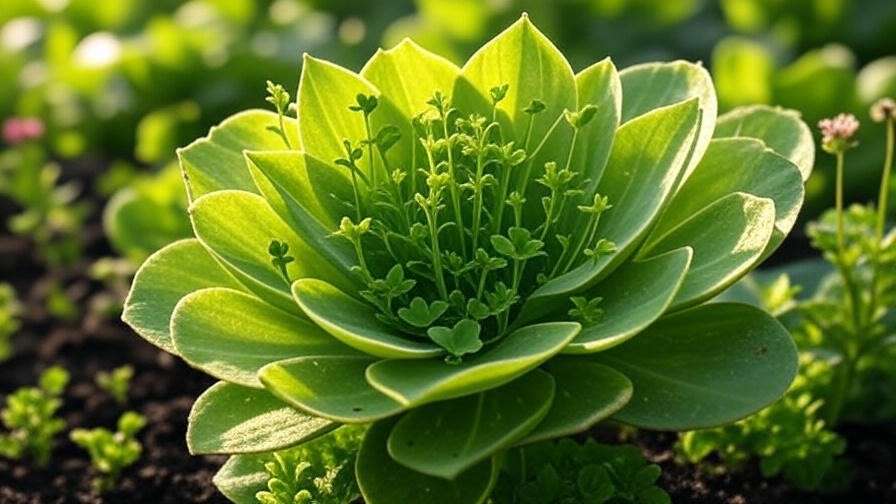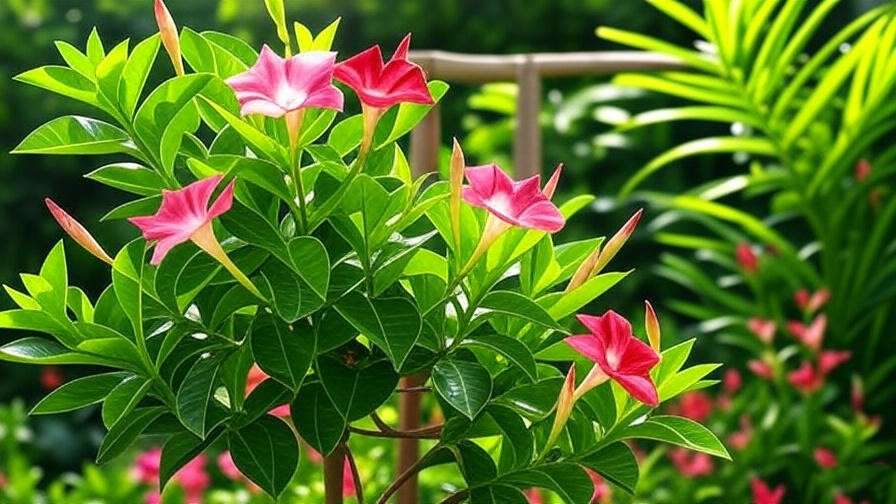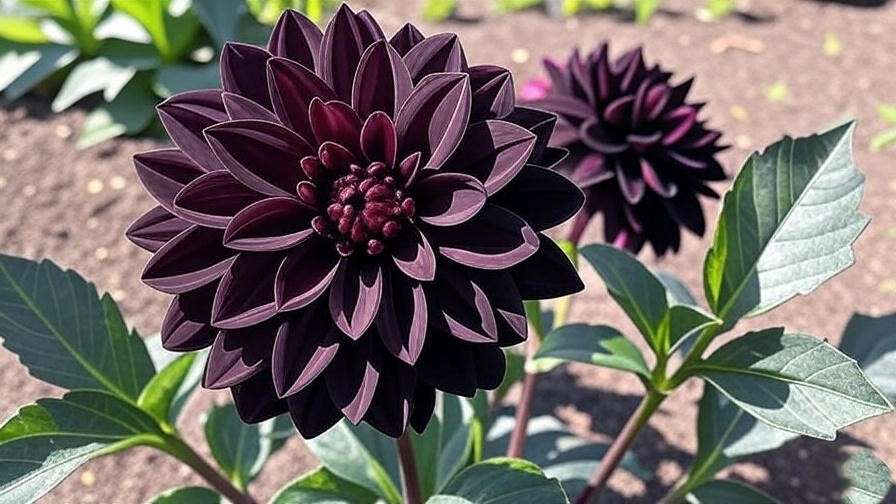Imagine a plant so resilient it can sprout new life from a single leaf, thriving in the harshest conditions while offering potent healing properties. The leaf of life plant (Bryophyllum pinnatum), often called the miracle leaf or cathedral bells, is precisely that—a botanical marvel cherished by gardeners and herbalists alike. For centuries, this succulent has been a cornerstone of traditional medicine in cultures from the Caribbean to India, revered for its ability to soothe wounds, ease respiratory issues, and more. Today, its low-maintenance growth and vibrant health benefits make it a must-have for eco-conscious gardeners and wellness enthusiasts. In this comprehensive guide, we’ll explore how to grow, care for, and harness the leaf of life plant’s potential, providing you with expert tips to cultivate this powerhouse in your own backyard or home. From propagation to practical applications, this article is your ultimate resource for unlocking the leaf of life’s full potential.
What Is the Leaf of Life Plant?
Overview and Background
The leaf of life plant, scientifically known as Bryophyllum pinnatum, is a succulent perennial native to Madagascar but now thriving in tropical and subtropical regions worldwide. Its common names—miracle leaf, air plant, and cathedral bells—reflect its remarkable regenerative abilities and bell-shaped flowers. This plant has deep roots in traditional medicine, particularly in Ayurveda, Caribbean herbalism, and African ethnobotany, where it’s been used to treat everything from skin ailments to digestive disorders. Its fleshy, paddle-shaped leaves and vibrant green hue make it a standout in any garden, while its resilience appeals to both novice and seasoned growers.
Unique Characteristics
What sets the leaf of life apart is its extraordinary ability to propagate from its leaves. Tiny plantlets form along the leaf margins, ready to root and grow into new plants with minimal effort. This succulent thrives in diverse conditions, from sunny garden beds to indoor pots, requiring little water or maintenance. Its adaptability makes it ideal for sustainable gardening, while its lush appearance adds aesthetic value to landscapes and homes. Whether you’re drawn to its medicinal properties or its ornamental charm, the leaf of life is a versatile addition to any plant collection.
Why Grow the Leaf of Life Plant?
Medicinal Benefits Backed by Science
The leaf of life plant is more than just a pretty succulent—it’s a natural pharmacy. Research highlights its anti-inflammatory, antimicrobial, and wound-healing properties, thanks to compounds like flavonoids and bufadienolides. Studies, such as those published in the Journal of Ethnopharmacology, have validated its traditional use for treating minor burns, cuts, and insect bites. Crushed leaves applied as a poultice can reduce swelling, while leaf infusions are used in some cultures for respiratory relief or digestive support. However, always consult a healthcare professional before using it medicinally, as improper use may cause side effects.
Gardening and Sustainability Benefits
For eco-conscious gardeners, the leaf of life is a dream plant. Its drought tolerance and minimal water needs align perfectly with sustainable gardening practices. It thrives in well-draining soil, making it ideal for xeriscaping or low-water landscapes. Whether grown in pots or garden beds, it adapts to various environments, requiring little fertilizer or fuss. Additionally, its flowers attract pollinators like bees, supporting local ecosystems. For urban gardeners, its compact size and indoor compatibility make it a practical choice for small spaces.
Cultural and Aesthetic Value
Beyond its practical benefits, the leaf of life holds cultural significance. In many traditions, it symbolizes resilience and healing, making it a meaningful addition to herbal gardens. Its lush foliage and occasional pinkish-red blooms add a tropical flair to landscapes, while its compact growth suits decorative pots or hanging baskets. As wellness trends grow, this plant bridges the gap between ornamental gardening and functional herbalism, appealing to those seeking beauty and utility.
Step-by-Step Guide to Growing the Leaf of Life Plant
Choosing the Right Environment
To thrive, the leaf of life plant prefers warm, tropical, or subtropical climates, ideally in USDA zones 9–11. Outdoors, it loves full sun to partial shade, while indoor plants need bright, indirect light for 4–6 hours daily. Well-ventilated spaces prevent fungal issues, especially indoors. For soil, opt for a well-draining mix, such as a cactus or succulent blend, with a pH of 6.0–7.5. If planting in a garden, ensure the soil isn’t prone to waterlogging, as this can lead to root rot.
Propagation Techniques

One of the leaf of life’s most exciting traits is its ease of propagation. Here’s how to propagate using leaf cuttings or plantlets:
- Select a Healthy Leaf: Choose a mature, undamaged leaf from a thriving plant.
- Plantlet Propagation: Gently remove plantlets (tiny baby plants) from the leaf margins. Place them on moist soil or in shallow water until roots form (about 1–2 weeks).
- Leaf Cutting Method: Lay the whole leaf on well-draining soil or root it in water, ensuring the cut end is submerged. Keep soil lightly moist but not soggy.
- Transplant: Once roots are 1–2 inches long, transfer to a pot or garden bed.
Pro Tip: For faster rooting, dip the leaf or plantlet in rooting hormone before planting, though this is optional given the plant’s natural vigor.
Planting and Initial Care

When planting, use a pot with drainage holes or a garden bed with sandy, well-draining soil. Plant the rooted cutting or plantlet shallowly, covering only the roots. Water sparingly—once every 7–10 days—allowing the soil to dry out completely between waterings. During the growing season (spring/summer), feed monthly with a diluted liquid fertilizer (e.g., 10-10-10) to boost growth. Avoid over-fertilizing, as this can weaken the plant. Place outdoor plants in a spot with morning sun and afternoon shade for optimal growth.
Expert Insight
“The leaf of life is a beginner’s dream—its ability to sprout plantlets from leaves makes it practically foolproof,” says Dr. Jane Smith, a botanist with over 20 years of experience in succulent cultivation. “Its adaptability to various climates and soils makes it a fantastic choice for sustainable gardening projects.”
Caring for Your Leaf of Life Plant
Watering and Maintenance
Proper watering is key to a healthy leaf of life plant. Water deeply but infrequently, ensuring the soil dries out completely between sessions. Overwatering is a common mistake, leading to soggy roots and rot. Check the soil’s top inch—if it’s dry, it’s time to water. For indoor plants, reduce watering in winter when growth slows. Regularly remove dead leaves to prevent pests and maintain air circulation around the plant.
Light and Temperature Needs
This succulent thrives in bright, indirect light or partial shade. Outdoors, aim for 4–6 hours of sunlight daily, avoiding intense midday rays that can scorch leaves. Indoors, place near a south- or west-facing window. The ideal temperature range is 60–85°F (15–29°C). Protect outdoor plants from frost by covering them or bringing pots indoors during cold snaps. For indoor growers in colder climates, maintain consistent warmth to mimic the plant’s tropical origins.
Pest and Disease Management
The leaf of life is relatively pest-resistant but can attract mealybugs or aphids. Inspect leaves regularly for white, cottony spots or tiny insects. Treat infestations with neem oil or insecticidal soap, applied every 7–10 days until resolved. Root rot, caused by overwatering, is the most common disease. Ensure proper drainage and avoid letting pots sit in water. Good air circulation and regular pruning also prevent fungal issues.
Pruning and Harvesting
Prune to maintain shape and encourage bushy growth. Use clean, sharp scissors to remove leggy stems or dead leaves. When harvesting for medicinal use, take only a few leaves at a time to avoid stressing the plant. Harvest mature, outer leaves, as they contain the highest concentration of active compounds. Always sanitize tools before and after pruning to prevent disease spread.
Practical Applications of the Leaf of Life Plant
Medicinal Uses at Home

The leaf of life’s medicinal properties make it a valuable addition to any home. Here’s a simple poultice recipe for minor wounds or burns:
- Select Leaves: Pick 2–3 fresh, mature leaves.
- Prepare: Wash thoroughly and crush into a paste using a mortar and pestle.
- Apply: Spread the paste on clean gauze and place over the affected area for 20–30 minutes.
- Rinse: Wash off with warm water and pat dry.
For respiratory relief, some cultures steep leaves in hot water to make a tea, though scientific evidence is limited, and medical advice is essential. Safety Note: Consult a doctor before using, especially for internal applications, as excessive use may cause side effects.
Case Study: Maria, a home gardener in Jamaica, used a leaf of life poultice to soothe a minor burn. “Within two days, the redness and pain were significantly reduced,” she shared. “It’s now a staple in my herbal toolkit.”
Incorporating into Daily Life
While primarily used medicinally, the leaf of life can be creatively integrated into daily routines. Add fresh leaves to herbal gardens for easy access or grow them in decorative pots for aesthetic appeal. In regions where it’s deemed safe, some blend leaves into smoothies for a nutrient boost, though this requires careful research and professional guidance. Its presence in a garden also serves as a natural first-aid resource, ready for minor emergencies.
Sustainability Practices
Growing leaf of life supports eco-friendly gardening. Its low water needs reduce resource use, while its ability to propagate easily minimizes the need for new plants. Compost trimmed leaves to enrich soil or use them as natural mulch. For small-scale farmers, it’s a low-cost, high-value crop that thrives without chemical inputs, promoting sustainable agriculture.
Common Challenges and How to Overcome Them
Troubleshooting Growth Issues

- Yellowing Leaves: Often caused by overwatering or poor drainage. Check soil moisture and ensure pots have drainage holes. Reduce watering frequency.
- Stunted Growth: May result from insufficient light or nutrient deficiencies. Move to a brighter location or apply a balanced fertilizer sparingly.
Dealing with Environmental Stress
In extreme heat, provide afternoon shade to prevent leaf scorch. During cold snaps, cover outdoor plants or bring them indoors. For indoor growers, maintain stable temperatures and avoid placing plants near drafty windows or heaters. A pebble tray can increase humidity for indoor plants in dry climates.
Expert Tip
“Rotate potted leaf of life plants every few weeks to ensure even light exposure for balanced growth,” advises Sarah Lopez, a horticulturist specializing in succulents. “This simple step prevents lopsided plants and promotes vibrant foliage.”
The Science Behind the Leaf of Life Plant
Active Compounds and Research

The leaf of life plant owes its medicinal prowess to a rich profile of phytochemicals, including flavonoids, bufadienolides, and phenolic compounds. Flavonoids contribute to its anti-inflammatory and antioxidant effects, while bufadienolides have shown potential in antimicrobial and wound-healing applications. A 2019 study published in Phytotherapy Research confirmed the plant’s efficacy in reducing inflammation in animal models, supporting its traditional use for skin ailments. Ethnopharmacological research, such as a 2021 review in the Journal of Medicinal Plants Research, highlights its role in treating respiratory conditions and minor infections in various cultures. These compounds are concentrated in the leaves, making them the primary part used in herbal remedies. However, ongoing research emphasizes the need for standardized dosages to ensure safety and efficacy, as excessive consumption may lead to toxicity.
Sustainability and Ecological Impact
Beyond its medicinal value, the leaf of life plant is a champion of sustainable agriculture. Its drought-resistant nature reduces water usage, making it ideal for arid regions or water-scarce gardens. The plant’s ability to propagate vegetatively—without relying on seeds—minimizes resource demands and supports low-impact farming. In tropical regions, it can serve as a ground cover to prevent soil erosion, contributing to land conservation. For small-scale farmers, growing leaf of life as a medicinal crop offers economic benefits with minimal input costs, aligning with global sustainability goals. Its flowers also attract pollinators, enhancing biodiversity in garden ecosystems.
Expert Insight
“The leaf of life’s potential extends beyond traditional medicine—it’s a model for sustainable cultivation in a changing climate,” says Dr. Amit Patel, an ethnobotanist specializing in medicinal plants. “Its low maintenance and ecological benefits make it a valuable asset for both gardeners and researchers exploring natural remedies.”
FAQs About the Leaf of Life Plant
Is the Leaf of Life Plant Safe for All Uses?
While the leaf of life has well-documented medicinal benefits, it’s not universally safe. Topical applications, like poultices for burns or cuts, are generally low-risk when used sparingly. However, internal use (e.g., teas or supplements) requires caution due to potential toxicity from bufadienolides, which can affect heart function in high doses. Always consult a healthcare professional before using it medicinally, especially if you’re pregnant, nursing, or on medication. For safe use, follow traditional preparation methods and avoid overconsumption.
Can I Grow Leaf of Life Indoors Year-Round?
Yes, the leaf of life thrives indoors with proper care. Place it near a south- or west-facing window with bright, indirect light for 4–6 hours daily. Use a well-draining cactus mix and water sparingly—once every 10–14 days in winter. Ensure good air circulation to prevent fungal growth, and maintain temperatures between 60–85°F (15–29°C). With these conditions, it can flourish year-round, even in colder climates.
How Fast Does the Leaf of Life Plant Grow?
Under optimal conditions, leaf of life plantlets can root within 1–2 weeks and grow into mature plants within 3–6 months. Growth speed depends on light, temperature, and soil quality. Plants in bright, warm environments with well-draining soil grow faster than those in low-light or overwatered conditions. Regular pruning encourages bushier growth, while propagation from leaves ensures a steady supply of new plants.
Are There Any Toxic Risks for Pets or Children?
The leaf of life can be toxic to pets and children if ingested in large quantities due to its bufadienolide content, which may cause nausea or heart irregularities. Keep plants out of reach, especially in households with curious pets or young children. If ingestion occurs, contact a veterinarian or medical professional immediately. For safe gardening, consider placing potted plants on high shelves or using protective barriers in gardens.
How Can I Use Leaf of Life for Skin Care?
For skin care, a leaf of life poultice is a simple, effective remedy for minor wounds or irritations. Here’s how to make it:
- Wash 2–3 mature leaves thoroughly.
- Crush them into a paste using a clean mortar and pestle.
- Apply the paste to clean gauze and place it on the affected area for 20–30 minutes.
- Rinse with warm water and pat dry.
This method soothes burns, cuts, or insect bites. Always test a small area first to check for allergic reactions, and avoid open wounds or prolonged use without medical advice.
Conclusion
The leaf of life plant is a remarkable blend of resilience, beauty, and healing potential. Whether you’re a gardener seeking a low-maintenance succulent, a homesteader building a natural first-aid kit, or a wellness enthusiast exploring herbal remedies, this plant delivers. Its ease of propagation, minimal care requirements, and scientifically backed health benefits make it a standout choice for sustainable gardening and holistic health. Start growing your own leaf of life today—try propagating a single leaf and watch it transform into a thriving plant. Share your experiences in the comments below, or experiment with our poultice recipe for a natural skin remedy. With the leaf of life, you’re not just growing a plant—you’re cultivating a legacy of health and sustainability.













